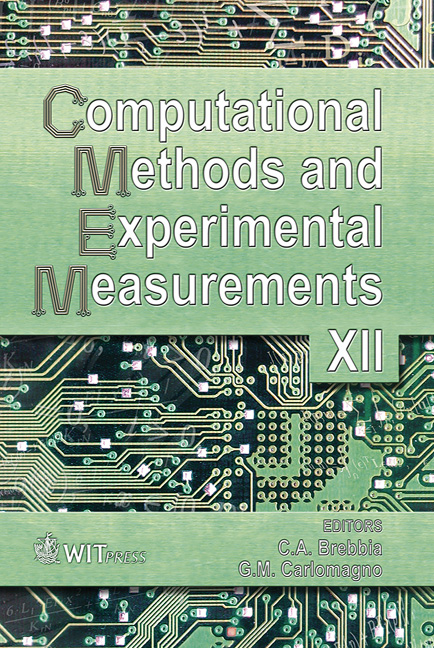Unsteady Interaction Of A Low Temperature Plasma Jet With A Solid Propellant Plate
Price
Free (open access)
Transaction
Volume
41
Pages
8
Published
2005
Size
395 kb
Paper DOI
10.2495/CMEM050811
Copyright
WIT Press
Author(s)
A. D. Rychkov, H. Miloshevich & Yu. I. Shokin
Abstract
The problem of the interaction of a high-temperature reactive gas mixture with a semi-infinite solid propellant plate is investigated. The ignition conditions of the plate are determined in the framework of the well-known model of burning powder with constant surface temperature when the heat flux into the plate is limited by some critical value. The gas medium is generated due to the fluid (water or methane) evaporation under the action of the impulse electric highpowered discharge in the semi-closed volume and its outflow to the ambient space. The presence of non-equilibrium chemical reactions is considered. The number of chemical species and chemical reactions is approximately several dozen. As the result of numerical modeling the presence of ignition zones and non-burning zones (gasification zones) along the surface of the solid propellant plate is discovered. Keywords: numerical modeling, non-stationary flow, ignition of solid propellant, low-temperature plasma jet. 1 Introduction The application of low-temperature plasma for ignition of solid propellants (gun powders) in artillery systems of big calibres represents significant practical interest as it allows one to raise the reliability of ignition at reduced ignition times of powder charges (Koleczko et al [1]). It is connected to the basic advantage of plasma as an opportunity of achievement of high temperatures, which cannot be reached with the help of traditional igniters. Besides, there is a very important opportunity to use the radiating flux from plasma for acceleration of the ignition process (Koleczko and Eisenreich [2]). The application of
Keywords
numerical modeling, non-stationary flow, ignition of solid propellant, low-temperature plasma jet.





